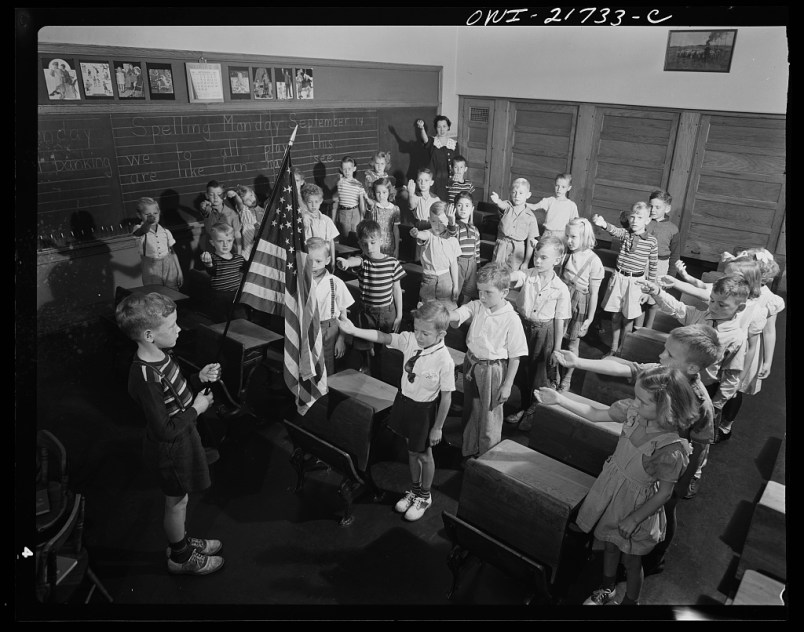In 1892, the children’s magazine Youth’s Companion led a campaign to commemorate the four hundredth anniversary of Christopher Columbus’s arrival in America. Francis Bellamy, the leader of the drive, convinced Congress to make Columbus Day a national holiday and then coordinated plans for the celebration. He advanced a then-novel proposal that every schoolhouse in the nation would display the American flag and then lead students through a brief ceremony celebrating it and the country it represented.

The ceremony, Bellamy believed, should focus on “an original Carol, an original Address, [and] an original Ode, prepared by the best American writers.” Focused on those details, Bellamy paid little attention to the comparatively minor details of the flag salute. A colleague who was supposed to handle it was unable to come up with anything, however, and Bellamy had to write it himself. He
spent only two hours drafting the pledge, but he was satisfied with the
result: “I pledge allegiance to my Flag and to the Republic for which it
stands—one Nation indivisible—with Liberty and Justice for all.”
(Though Bellamy was a Baptist minister and a self-styled Christian
Socialist, his pledge was godless. The words “under God” wouldn’t be
added until 1954.)
Despite the initial lack of emphasis on it, in time the pledge proved to be the most memorable part of the ceremonies. As the practice of saluting the flag spread, Bellamy set down these instructions. Though Bellamy’s guide called for students to hold out an empty hand, palms facing up, in practice many held their
hands straight out, palms down. Needless to say, this practice was
abandoned during the Second World War.








Creepy. Just like The Pledge itself.
The hand out, palm up gesture reminds me of Oliver Twist asking for more food (from the nanny state). I wonder what arch conservatives/libertarians would think of this association with patriotic ritual?
I was in school in the late '50s and early '60s in a very conservative and wealthy suburb of Detroit, and while reciting the Pledge was a daily routine, we never, ever, did anything other than put our hands over our heart while we said the words. The idea of holding out our arms in a very Nazi-like salute would have been unthinkable.
Sieg Heil, y’all…
I have never understood why I would pledge allegiance to a flag. My allegiance is to my country, not a piece of cloth. When I was in school the “under god” phrase wasn’t used yet, and I have always deleted it when I’m in a group pledging allegiance to a piece of cloth.